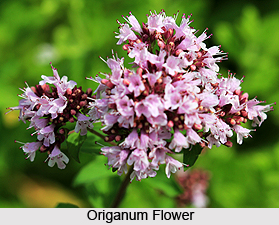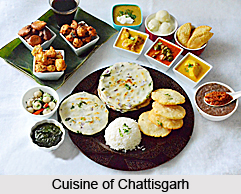 Botanical name:Origanum vulgare Linn.
Botanical name:Origanum vulgare Linn.
Family name:Labiatae.
Indian names are as follows:
Hindi:Sathra, Mirzanjosh
Punjabi and Urdu:Mirzanjosha.
Origanum, Oregano, Mexican Origanum or wild marjoram of trade is the dried leaves of an aromatic branched perennial herb, 30 to 90 cm high. Leaves broadly ovate, entire or rarely toothed; flowers purple or pink in corymbose cymes; nuts smooth, brown.
It is hardy and can be grown in all warm garden soils. Seeds, cuttings, layers and root division propagate it. It can be sown during October in the plains and during March and April in the hills.
The color of the dried herb is light green. The aroma is strong, aromatic, camphoraceous and resembles that of marjoram. The taste is fragrant, spicy, warm, pungent and bitter. The plant owes its usefulness as a culinary herb to its volatile oil.
The composition of the spice is as follows:
Moisture:8.0%
Protein:11.7%
Fat:6.4%
Fiber:11.0%
Carbohydrates:53.9%
Total ash:9.0%
Calcium:1.7%
Phosphorus:0.20%
Iron:0.05%
Sodium:0.02%
Potassium:1.7%
Vitamin A:1010 I.U/100 gram
Vitamin B1:0.34 mg/100 gram
Vitamin B2:0.41 mg/100 gram
Niacin:6.2 mg/100 gram
Vitamin C:12 mg/100 gram
Calorific value:350 calories/100 gram.

Origanum also contains volatile oil, fixed oil, cellulose, pigment and mineral elements. Oil of origanum appears to be made under this name from a number of related species of Labiatae plants. In some origanum oils, thymol is the main constituent; in others carvacrol. Botanists and herb growers classify it as the `pizza herb`.
The herb contains a volatile oil (0.15 to 0.40%), tannin (about 0.8%) and a bitter principle. The seeds yield 29.2% fatty oil, which is an excellent raw material for manufacture of soap. The volatile oil contains thymol, carvacrol, free alcohols, esters as geranyl acetate, dl. pinene, dipentene, linalool, bi- and tri- sesquiterpenes and Palmitic acid.
Oregano is an essential ingredient of chilli sauce, and is used in many Mexican dishes.. Origanum is also used for flavoring soups, meat dishes, pork, fish, egg dishes and salads. Oregano is commonly known a `Pizza herb`. It forms an important ingredient of European cuisine`s like pizza, tomato specialties, meet, fish, cheese, Aubergine, Zucchini sauce and dressings. The essential oil of oregano is used for flavoring meat, tomato sauces, stuffing`s, soups and beverages.
It is reported that no Mexican kitchen is without oregano since they contend that no other herb communicates such excellent aroma and flavor to food. The leaves and tops prior to blooming are used to flavor foods in the same way as sweet marjoram.
The plant is used in Punjab as potherb and cooked as vegetable. It is eaten also as vegetable in Lahoul and Sphiti, in Himachal Pradesh. It was formerly employed to flavor ale and beer before hops was introduced in the brewing industry.
The oil possesses carminative, stomachic, diuretic, diaphoretic and emmenagogue properties. It is given as a stimulant and tonic in colic and diarrhea. It is also applied in chronic rheumatism, toothache and earache. Due to spasmolytic action of the oil, it is used in whooping cough and bronchitis. It stimulates growth of hair for which it is often added in hair oils and shampoos. It is used as an external application in healing lotions for wounds, usually in conjunction with other herbs.




















